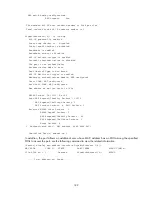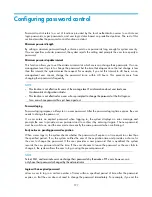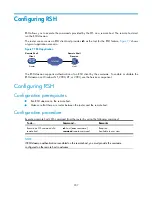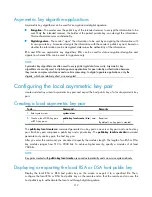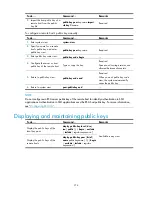
199
Password complexity checking
A less complicated password such as a password containing the username or repeated characters is
more likely to be cracked. For higher security, configure a password complexity checking policy to
ensure that all user passwords are relatively complicated. With such a policy configured, when a user
configures a password, the system checks the complexity of the password. If the password is not
qualified, the system refuses the password and displays a password configuration failure message.
impose the following password complexity requirements:
•
A password cannot contain the username or the reverse of the username. For example, if the
username is
abc
, a password such as
abc982
or
2cba
is unqualified.
•
No character of the password is repeated three or more times consecutively. For example,
password
a111
is not qualified.
Password display in the form of a string of asterisks (*)
For the sake of security, the password a user enters is displayed in the form of a string of asterisks (*).
Authentication timeout management
The authentication period is from when the server obtains the username to when the server finishes
authenticating the user's password. If a Telnet user fails to log in within the configured period of time,
the system tears down the connection.
Maximum account idle time
set the maximum account idle time to make accounts staying idle for this period of time become invalid
and unable to log in again. For example, if you set the maximum account idle time to 60 days, and a
user who is using the account
test
has never logged in successfully within 60 days after the last
successful login, the account becomes invalid.
Logging
The system logs all successful password changing events and user blacklisting events due to login
failures.
Configuration task list
The password control functions can be configured in several views, and different views support different
functions. The settings configured in different views or for different objects have different application
ranges and different priorities:
•
Global settings in system view apply to all local user passwords and super passwords.
•
Settings in user group view apply to the passwords of all local users in the user group.
•
Settings in local user view apply to only the password of the local user.
•
Settings for super passwords apply to only super passwords.
The above types of settings have different priorities:
•
For local user passwords, the settings with a smaller application range have a higher priority.
•
For super passwords, the settings configured specifically for super passwords (if any) override those
configured in system view.





